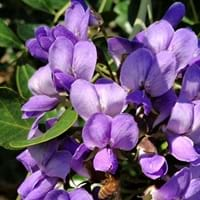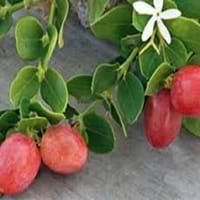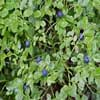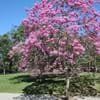Life Span
Perennial
Perennial
Origin
Southwestern United States, Texas
Central Asia, Southern Asia, Western Ghats, India
Types
Not Available
congesta, paucinervia
Number of Varieties
Not Available
Habitat
Arid Habitats, riparian zones
Fertile bottom land, moist forests, Temperate Regions, Tropical Forests
USDA Hardiness Zone
11-15
Not Available
Sunset Zone
8, 9, 10, 11, 12, 13, 14, 15, 16, 18, 19, 20, 21, 22, 23, 24
Not Available
Habit
Upright/Erect
Upright/Erect
Flower Color
Purple, Blue Violet
Pale White, White
Flower Color Modifier
Bicolor
Bicolor
Fruit Color
Brown
Purple, Black
Leaf Color in Spring
Dark Green
Green
Leaf Color in Summer
Dark Green
Green
Leaf Color in Fall
Dark Green
Green
Leaf Color in Winter
Dark Green
Light Green
Plant Season
Spring
Spring, Summer, Fall
Sunlight
Full Sun
Full Sun, Partial Sun, Partial shade
Growth Rate
Medium
Medium
Type of Soil
Clay, Loam, Sand
Loam
The pH of Soil
Acidic, Neutral, Alkaline
Acidic, Neutral, Alkaline
Soil Drainage
Well drained
Well drained
Bloom Time
Early Spring, Spring, Late Winter
Spring
Tolerances
Drought, Salt, Soil Compaction
Drought
Where to Plant?
Ground
Ground
How to Plant?
Seedlings
Seedlings, Stem Cutting
Plant Maintenance
Medium
Medium
Watering Requirements
Drought Tolerant
Keep the ground moist but not water-logged
In Summer
Lots of watering
Lots of watering
In Spring
Moderate
Moderate
In Winter
Average Water
Average Water
Soil pH
Acidic, Neutral, Alkaline
Acidic, Neutral, Alkaline
Soil Type
Clay, Loam, Sand
Loam
Soil Drainage Capacity
Well drained
Well drained
Sun Exposure
Full Sun
Full Sun, Partial Sun, Partial shade
Pruning
Remove damaged leaves, Remove dead branches, Remove dead leaves
Prune if you want to improve plant shape, Remove dead leaves
Fertilizers
All-Purpose Liquid Fertilizer
Compost, fertilize in growing season
Pests and Diseases
Red blotch
Aphids, Earwigs, Insects, Mildew, Red blotch, Rust, sawflies
Plant Tolerance
Drought
Dry soil, Heat And Humidity
Flowers
Showy
Insignificant
Flower Petal Number
Single
Single
Foliage Texture
Medium
Medium
Foliage Sheen
Glossy
Matte
Attracts
Butterflies
Birds, Butterflies, Fruit Bats
Allergy
Poisonous
Eczema, Mouth itching, Throat itching
Aesthetic Uses
Beautification
Not Available
Beauty Benefits
Not Available
good for lips, Remove blemishes
Environmental Uses
Air purification
Air purification, Food for animals, Food for birds, soil stabilisation
Medicinal Uses
Not Available
Anemia, Diuretic, Potassium, Rich in Iron, Vitamin C
Part of Plant Used
Flowers, Seeds, Wood
Fruits, Leaves
Other Uses
Used as Ornamental plant
Added to salads, Cosmetics, Culinary use, Used as a nutritious food item, Used As Food, Used for its medicinal properties
Used As Indoor Plant
No
No
Used As Outdoor Plant
Yes
Yes
Garden Design
Feature Plant, Shade Trees
Edible, Fruit / Fruit Tree, Hedges
Botanical Name
SOPHORA secundiflora
Carissa carandas
Common Name
Texas Mountain Laurel
Black Currant
In Hindi
Texas Mountain Laurel
करोंदा, कालि मैना
In German
Meskalbohne
Carandas
In French
Calia secundiflora
karondas
In Spanish
Texas Mountain Laurel
karondas
In Greek
Texas Mountain Laurel
karondas
In Portuguese
Texas Mountain Laurel
karondas
In Polish
Texas Mountain Laurel
karondas
In Latin
Texas Mountain Laurel
karondas
Phylum
Magnoliophyta
Magnoliophyta
Class
Magnoliopsida
Magnoliopsida
Order
Fabales
Gentianales
Family
Fabaceae
Apocynaceae
Clade
Angiosperms, Eudicots, Rosids
Angiosperms, Asterids, Eudicots
Tribe
Not Available
Not Available
Subfamily
Faboideae
Not Available
Number of Species
Not Available
Season and Care of Texas Mountain Laurel and Karonda
Season and care of Texas Mountain Laurel and Karonda is important to know. While considering everything about Texas Mountain Laurel and Karonda Care, growing season is an essential factor. Texas Mountain Laurel season is Spring and Karonda season is Spring. The type of soil for Texas Mountain Laurel is Clay, Loam, Sand and for Karonda is Loam while the PH of soil for Texas Mountain Laurel is Acidic, Neutral, Alkaline and for Karonda is Acidic, Neutral, Alkaline.
Texas Mountain Laurel and Karonda Physical Information
Texas Mountain Laurel and Karonda physical information is very important for comparison. Texas Mountain Laurel height is 760.00 cm and width 460.00 cm whereas Karonda height is 120.00 cm and width 120.00 cm. The color specification of Texas Mountain Laurel and Karonda are as follows:
Texas Mountain Laurel flower color: Purple and Blue Violet
Texas Mountain Laurel leaf color: Dark Green
Karonda flower color: Pale White and White
- Karonda leaf color: Green
Care of Texas Mountain Laurel and Karonda
Care of Texas Mountain Laurel and Karonda include pruning, fertilizers, watering etc. Texas Mountain Laurel pruning is done Remove damaged leaves, Remove dead branches and Remove dead leaves and Karonda pruning is done Prune if you want to improve plant shape and Remove dead leaves. In summer Texas Mountain Laurel needs Lots of watering and in winter, it needs Average Water. Whereas, in summer Karonda needs Lots of watering and in winter, it needs Average Water.





